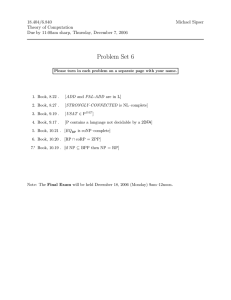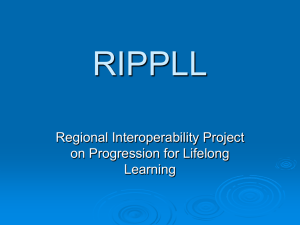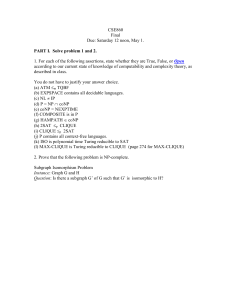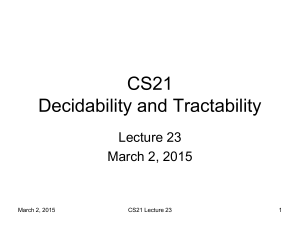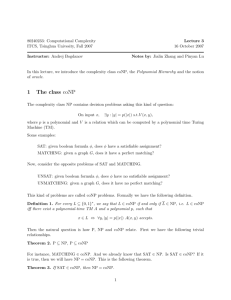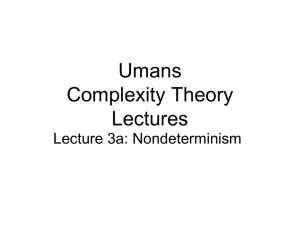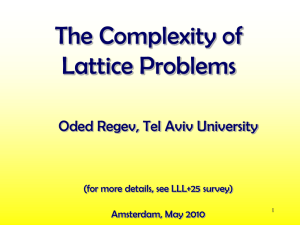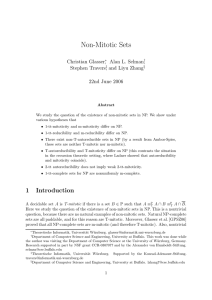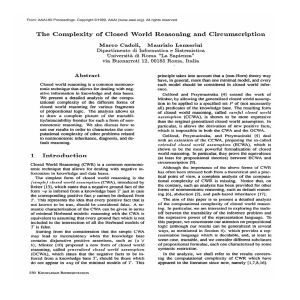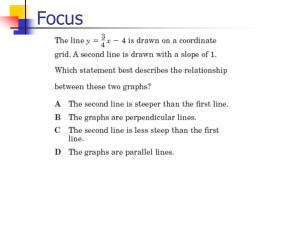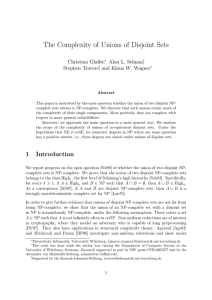Complexity Classes
advertisement
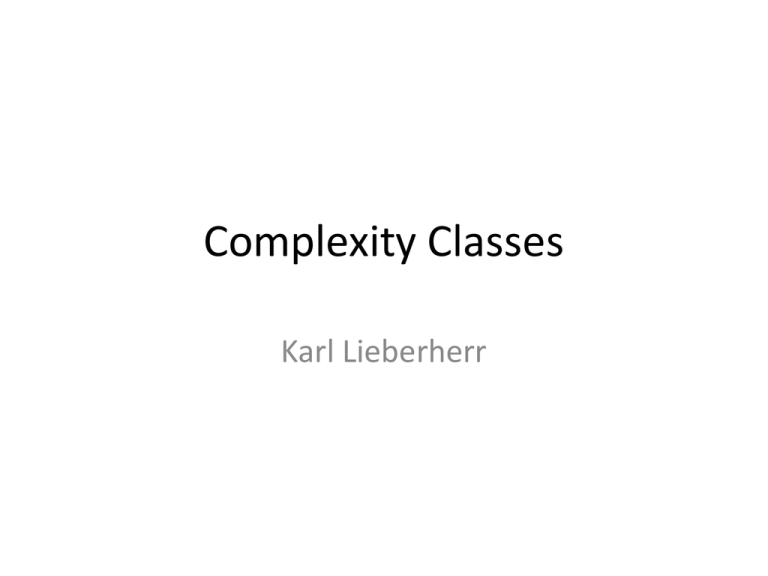
Complexity Classes Karl Lieberherr Source • From • http://people.cs.umass.edu/~immerman/desc riptive_complexity.html Polynomial-time Hierarchy complete complete SO coNP=SO A NP=SO E NP intersect coNP complete P Existential second-order logic 3-colorability can be expressed quite informally as: ∃ a coloring (“the coloring is a 3-coloring of the graph”) A little more formally as: ∃R∃G∃B (“Every point is in exactly one of the sets R, G, or B, and no two points that are connected by an edge are both in R, or both in G, or both in B”) This formula can be expressed formally in existential secondorder logic (∃SO) So 3-colorability can be expressed in ∃SO. Capturing NP with logic Fagin’s Theorem (1974): NP = ∃SO Example: 3-colorability Surprising, since characterizing a complexity class in terms of logic, where there is no notion of machine, computation, polynomial, or time. NP and coNP • NP is the set of languages that have short proofs. • coNP is the set of languages that have short refutations. • Note that coNP is not the complement of NP. NP intersect coNP is non-empty. Problems believed to be in NP intersect coNP but not in P • Graph Isomorphism • several others
